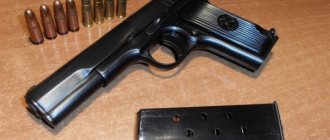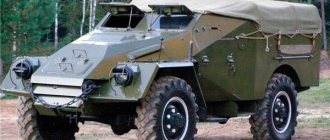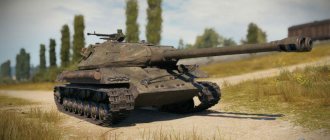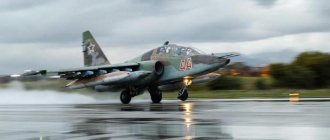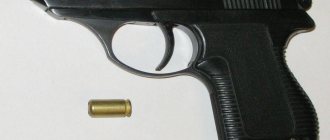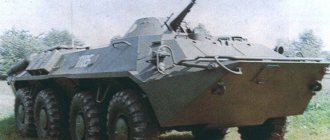Delivery failed
Living, according to official statements by Kyiv politicians, in a state of “Russian aggression,” Ukraine is making desperate attempts to create the latest models of military equipment using its own defense industry.
From time to time in Kyiv they report on the creation of the latest tanks, missiles, aircraft and armored personnel carriers, which are declared “the latest word in technology” and, of course, “superior to their Russian counterparts.”
News on the topic The Ukrainian Ministry of Defense promises to defeat the Russian army in the event of war
True, when the characteristics of the “new products” become known to military experts, it turns out that the equipment, firstly, is at best a modernization of old models, and secondly, does not meet modern standards.
The Ukrainian publication Apostrophe reported about a new failure of the Ukrainian defense industry. The previously planned delivery of Dozor-B tactical combat vehicles to the Ukrainian Armed Forces was disrupted.
In the hulls of two vehicles that were supposed to go to the troops, cracks were found in the armor in the area where the engine was located.
At the same time, in December 2015 it was announced that Dozor-B had passed state tests and was recommended for adoption.
The first batch of Dozors was supposed to be delivered to the Ukrainian Armed Forces by the end of March 2016. There was talk of a batch of 10 vehicles, but now the Ukrainian military will not receive a single one.
Design
The Dozor-B armored vehicle consists of a motor-transmission and passenger compartment. The habitable part is also divided into a front compartment, equipped with seats for the commander and driver, and a landing compartment, which can comfortably accommodate eight soldiers in full gear. The total curb weight is 7.8 tons. The car is powered by a four-cylinder IVECO turbocharged engine with 122 hp. (in the forced version 136 hp), produced under license in Kremenchug. If we consider that this vehicle is more than six times heavier than the Zhiguli, for example, then we can come to the conclusion that the power plant is weak. It is only twice as powerful as the VAZ-“penny” engine. A fuel reserve of 300 liters ensures autonomy of 700 kilometers. The transmission is five-speed, imported.
You can make a convenient shoe rack for your closet: it’s spacious and it’s easy
Star Wars fans in Russia built a copy of the ship from the series The Mandalorian
The condition under which Russia will become a superpower: the opinion of science fiction writer Bradbury
Temporarily forgotten brainchild of the Soviet design bureau
Calling Dozor-B the latest machine can be done with some convention. Its first demonstration model was first presented at the arms exhibition “Zbroya and Bezpeka” in October 2004. The development of the armored vehicle was fully completed in 2006.
"Dozor-B" is a light-class armored vehicle with a 4x4 wheel arrangement, which is intended to equip special forces of the army and the Ministry of Internal Affairs. The developer of the machine is the Kharkov Mechanical Engineering Design Bureau named after Morozov, created in the USSR back in 1927. The glorious Soviet history of the design bureau was replaced by a much more modest Ukrainian one, but, nevertheless, it was it that developed all the main types of modern armored vehicles in Ukraine, including the widely advertised Oplot tank.
The production of Dozorov-B is entrusted to the Kharkov Transport Engineering Plant named after Malyshev and the Lvov Armored Plant.
However, since 2006, Dozor-B has not been in demand for many years. The Ukrainian army did not have money for new equipment, and foreign buyers looked at the new product with outright skepticism.
Finally, in 2011, a Polish company bought a license to produce an armored vehicle through an intermediary company.
Workers in the workshop for the production of light armored personnel carriers "Dozor - B" for the needs of the Armed Forces of Ukraine at the Lvov Armored Plant. Photo: RIA Novosti
Notes
- ↑ Under the guard of DOZOR // Ukrainian Defense Review magazine, No. 4, October - December 2014. pp. 24-29
- ↑ Vitaliy Stechyshyn. "DOZOR-B" in serial issue // newspaper "People's Army" dated April 6, 2015
- ↑ Shooting export. Results 2013 // “Defense Express”, No. 7, 2014. p.3
- ↑
- ↑
- ↑
- ↑
- ↑ Major A. Bronnikov. New Ukrainian armored combat vehicles // “Foreign Military Review”, No. 11 (812), November 2014. p. 56
- (unavailable link). Retrieved February 28, 2012.
- ↑ Under the guard of DOZOR // “Ukrainian Defense Review”, No. 1, January - February 2015. p.18-21
- ↑
- ↑
- In the spring, the update of “Watches” // “People's Army” is starting on June 16, 2015
- In the Lviv region, a new NBC reconnaissance vehicle based on “DOZOR-B” is being deployed // newspaper “People's Army” dated 3rd June 2018
- ↑
- Blik-2 weapons station makes debut at ADEX-2014 // Ukrainian Defense Review magazine, No. 4, October - December 2014. p. 6
- Morozov machinery design bureau completes development on a new machine gun turret for light armored vehicles // Ukrainian Defense Review magazine, No. 4, October - December 2014. p.8
- Combat module “Viy” // “Ukrainian Defense Review”, No. 1 (January - March) 2016. pages 32-33
- “KADEX-2012” // “Weapons” magazine, No. 10, October 2012. pp. 1-3
- Igor Fedyk. The breakthrough of Dozor // “Ukrainian Defense Review”, No. 4, October - December 2015. pages 22-25
- Shooting export. Results 2013 // Defense Express magazine, No. 7, July 2014. p.3
- The Military Balance 2022, p.211
“Watch” for the needs of the new government
In Ukraine, Dozor-B was remembered in 2014, when the Euromaidanists who seized power began to have militaristic plans for Donbass.
On May 31, 2014, the head of the Ministry of Internal Affairs of Ukraine Arsen Avakov announced the possibility of purchasing Dozor armored vehicles for the National Guard of Ukraine, and the next day he announced that Dozor-B would be sent for testing.
On June 4, 2014, Dozor-B was presented at the National Guard training ground near Chuguev, Kharkov region. On June 6, 2014, Acting President of Ukraine Alexander Turchynov announced that 200 Dozor-B armored vehicles would enter service with the Ukrainian army.
The new armored car began to be demonstrated at various official events and international exhibitions, speaking of the unprecedented growth of Ukraine’s military power.
By the fall of 2014, it turned out that several hulls had been made, but the process stopped due to the lack of engines.
In December 2014, Deputy General Director of the Ukroboronprom State Concern for Production, Yuriy Pashchenko , announced that serial production of Dozor-B would begin in March 2015 at the Lviv Armored Plant.
Performance characteristics
5.1 Dimensions
- Case length, mm: 5400
- Case width, mm: 2400
- Height, mm: 2280 (2650 with weapons)
- Base, mm: 3100
- Track, mm: 1950
- Ground clearance, mm: 400.
5.2 Armament
- HV angles, degrees: −3…+68°
- Machine gun(s): 1 x 12.7 mm NSVT
- Machine gun(s) ammunition: 450.
5.3 Mobility
- Engine type: Deutz BF 4M 1013FC
- Wheel formula: 4×4
- Suspension type: independent
- Highway speed, km/h: 90
- Cruising range on the highway, km: up to 750
- Climbability, degrees: 30
- Wall to be overcome, m: 0.4
- Width of the ditch to be overcome, m: 2.0
- Fordability, m: 1.5.
5.4 Other parameters
- Combat weight, t: 6.3
- Crew, people: 3
- Troops, people: 8.
I'm coming, you're dumb...
On January 30, 2015, Petro Poroshenko was shown an updated pre-production sample of Dozor-B. The President of Ukraine was pleased.
A couple of days later, the press service of Ukroboronprom reported that by the end of 2015 the army would receive 50 Dozorov-Bs. In April, it was reported that a plant in Lvov had begun building armored cars, but it immediately became clear that, contrary to previous promises, they would not be purely Ukrainian - it was decided to make armored hulls from imported steel sheets made in Poland.
In June 2015, it turned out that they began making “Dozors” much later than they reported, and to date there are 10 hulls and two finished vehicles. After this, the director of the Lvov Armored Plant, Alexander Ostapets, was fired, and the new manager was instructed to urgently speed up the work.
At the end of November 2015, the Minister of Defense of Ukraine Stepan Poltorak personally tested the Dozor-B, reporting on his Facebook that by the end of the year 10 armored vehicles would enter the army (the 50 previously announced were no longer remembered).
While officials were reporting on successful tests and promising supplies to the troops, information leaked to the media that not all was well with Dozor-B. On November 28, 2015, the Deputy Minister of Defense of Ukraine, Lieutenant General Igor Pavlovsky, let slip in an interview that state tests revealed as many as 49 shortcomings in the Watch.
Despite this, the Ministry of Defense and Ukroboronprom agreed that the shortcomings would be quickly eliminated, the vehicle would be accepted, and deliveries to the troops would begin in the very near future.
They flew off. Ukrainian aircraft concern Antonov ceased to exist
More details
Protection
Passive protection is capable of resisting the effects of bullets, including armor-piercing ones, and fragments at a distance of 60 meters or more from the epicenter of the explosion of a 155 mm caliber projectile. It is believed that in the event of a collision with an anti-tank landmine, the bottom will withstand and save the people in the armored vehicle, but there are doubts about this, and serious ones, but more on that later. The announcements said a lot about active defense systems, including the Zaslon complex, which emits a probing radio signal within a radius of 2.5 m and detonates ammunition, dispersing cumulative jets and deflecting fragments or shells flying towards the armored vehicle. It is unlikely that such ingenious devices will be installed on production samples; they are too expensive, but they can be demonstrated at exhibitions and presentations, without testing, of course. The front glazing is armored.
... I tricked you, I let you down!
At first, the onset of the “near future” was expected in January 2016, then at the end of March.
But when 10 ill-fated Dozorov-Bs were about to be handed over to the Armed Forces of Ukraine, new interesting things became clear - the presence of through cracks about 40-50 cm long in the engine area of two armored vehicles.
Moreover, one of them had a test mileage of just over 400 km, and the second - just over 100.
The cracked armor turned out to be the same Polish one. And the Ukrainian armor of the “71” brand, originally included in the project, was replaced due to the complexity of its production.
At the same time, there are suspicions that a similar defect could appear at any time on the remaining machines of the first batch. Where they can get there is more a philosophical question than a practical one.
The Ministry of Defense of Ukraine is torn and tossed, demanding the creation of a commission to establish the causes of the defect, its complete elimination, as well as checking all calculations of the strength and rigidity of the structures of the hull parts. Manufacturers have not yet responded to these demands.
But in the near future, “Dozor-B” is again going to be shown to Petro Poroshenko as one of the examples of advanced Ukrainian technology.
Cooperation with foreign countries
All these characteristics could make a strong impression on potential opponents, ill-wishers and enemies of the new Ukraine, seeking to conquer a country that has chosen the European path of development. So President Poroshenko personally got behind the wheel of the Dozor, drove it and said that it was even easier to drive than an ordinary car. The armored car is proudly demonstrated in front of television cameras, its creation is declared a great victory for Ukroboronprom, it is called an example of successful cooperation with allied states belonging to the NATO bloc. And this, to some extent, is fair. Without foreign supplies, the construction of this light armored car would have been impossible. The Czech (VOP CZ, sp) expressed its readiness to take part in finalizing the project, after they pay for it, of course, and Poland, a historical friend and ally of Ukraine, has already sold armor for the Watch.
Chassis
The power transmission is mechanical, ensuring constant transmission of torque from the engine to all wheels. The power transmission includes a gearbox, transfer case, wheel gearboxes, front and rear final drives and driveshafts.
Dozor-B has an independent wishbone suspension with telescopic shock absorbers.
Dozor-B wheels are equipped with pneumatic, tubeless tires Michelin 365/20 XZL MTP TL. Michelin tires provide the Dozor-B armored personnel carrier with excellent off-road capability - desert, hilly roads, virgin snow, plowing, wetlands and dirt roads. Tire sizes: 295/80 R22, 5 or 335/80 R20.
The centralized tire inflation system of the Dozor-B armored personnel carrier regulates tire pressure from 1 to 4 kgf/cm2. The centralized tire inflation system ensures automatic maintenance of the specified tire pressure and allows you to control and change the tire pressure from the driver’s seat depending on road conditions.

